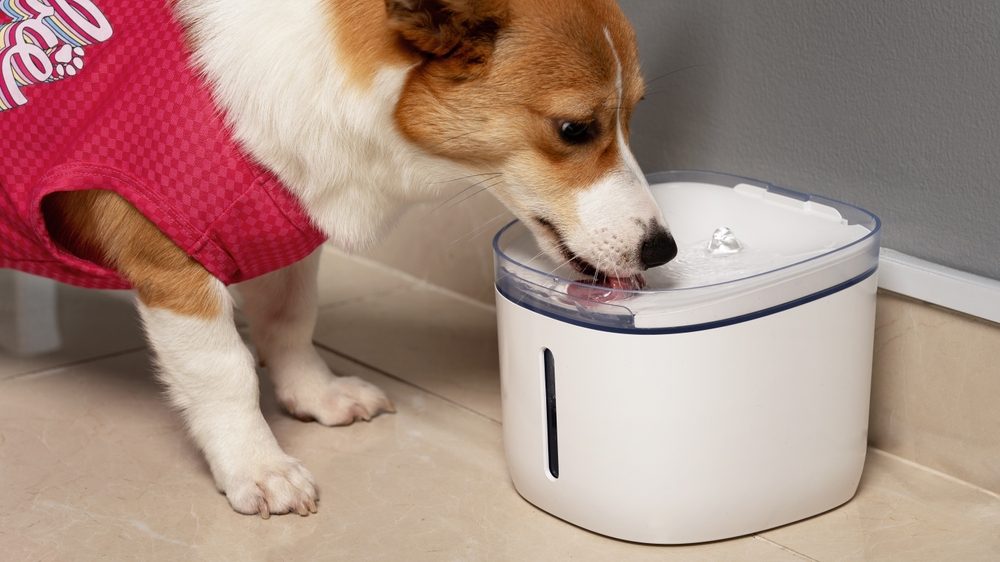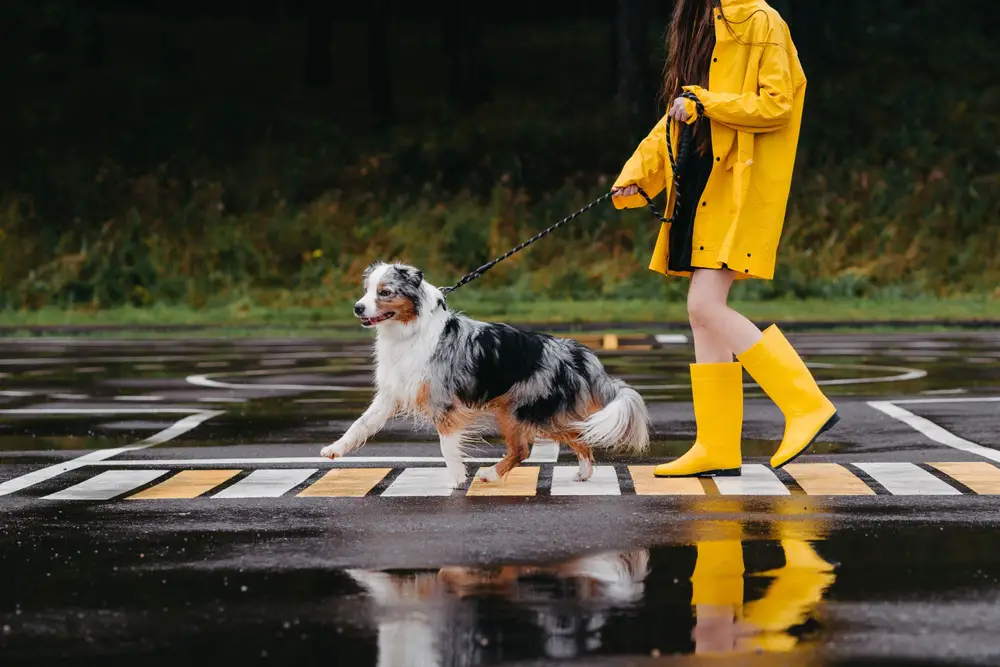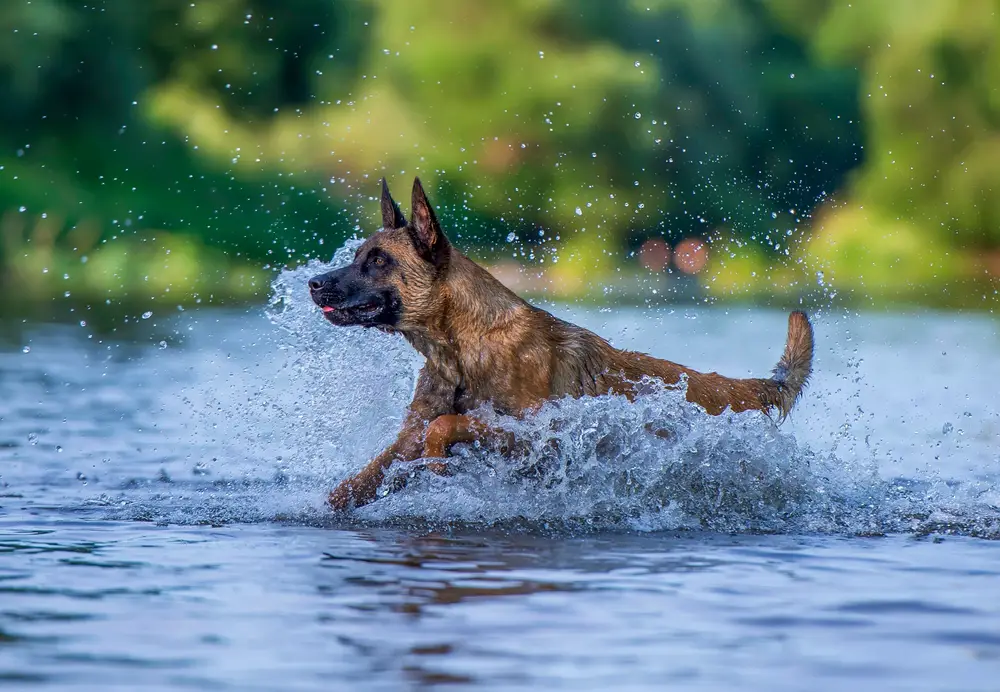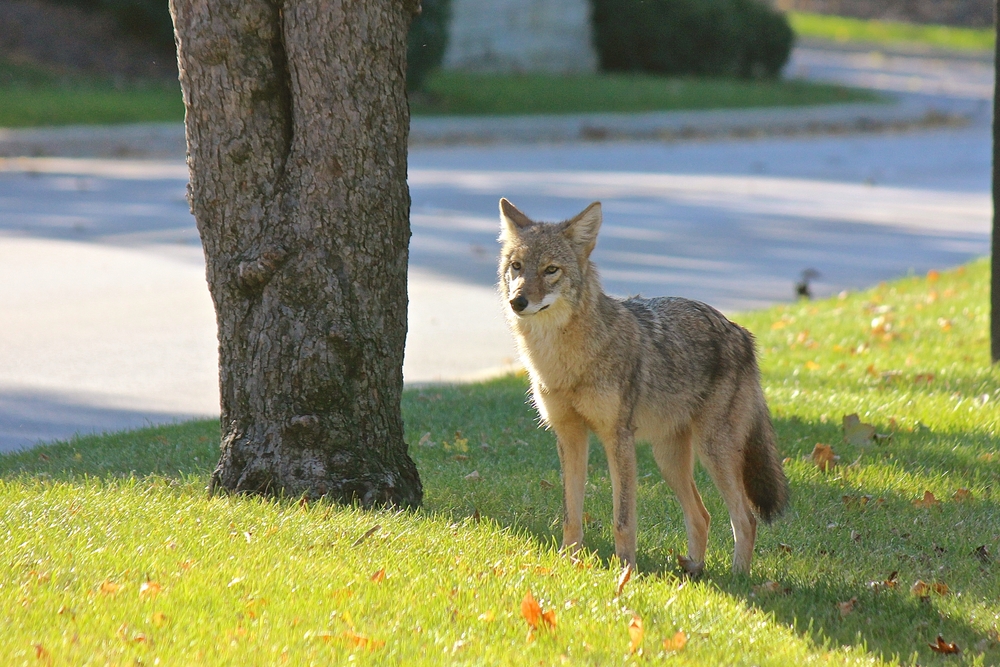Climate change isn’t just a far-off threat or a distant disaster; it’s a pressing issue impacting our daily lives, including the health and well-being of our beloved pets. From rising temperatures to unpredictable weather patterns, the changes in our environment are affecting our furry friends in ways we might not have considered. Let’s delve into 14 concerning ways that climate change is taking a toll on our pets, and what we can do to help.
1. Rising Temperatures Are No Walk in the Park

As global temperatures rise, our pets are feeling the heat just like we are. Dogs, in particular, are at risk of heatstroke during walks or playtime as the pavement can become blisteringly hot. According to the American Veterinary Medical Association, it’s critical to be mindful of the weather conditions before taking pets outside. Cats, too, can suffer in extreme heat, especially if they’re left without a cool place to retreat. Ensure your pets have plenty of water and shade during the hot months. Consider adjusting their exercise routines to cooler parts of the day, like early mornings or late evenings.
Indoor pets aren’t entirely safe from the heat either. Without adequate ventilation or air conditioning, homes can become uncomfortably warm for pets. It’s important to monitor indoor temperatures and never leave pets in cars, even briefly, as temperatures can skyrocket in minutes. Simple measures like keeping blinds closed and using fans can help keep your home, and your pets, cool.
2. Parasites Are on the Rise, and Everyone’s Scratching

Warmer climates are proving to be a paradise for parasites, leading to an increase in ticks, fleas, and mosquitoes. These pests not only cause discomfort but can also transmit serious diseases to pets, such as Lyme disease and heartworm. According to the Centers for Disease Control and Prevention, it’s important to use preventative treatments year-round now that flea and tick seasons are extending. Regularly checking your pets for these pests after being outdoors is also crucial.
The spread of parasites isn’t limited to certain regions anymore; they are expanding their reach as the climate warms. This means even if you live in an area that previously had minimal pest issues, it’s wise to be prepared. Keeping your yard tidy and free of standing water can help reduce mosquito breeding grounds. Understanding the risks and talking to your vet about the most effective preventatives will go a long way in keeping your pets healthy.
3. Allergies Aren’t Just a Human Problem Anymore

The increase in pollen and other allergens due to climate change is causing more than just sneezing fits in humans—our pets are feeling it too. Like us, pets can suffer from allergies that lead to itchy skin, runny noses, and watery eyes. Animal Humane Society notes that keeping your home as allergen-free as possible can help. Regular grooming and baths can also alleviate some symptoms in pets, especially dogs.
Allergies can sometimes be challenging to diagnose since their symptoms often mimic other illnesses or conditions. If you notice persistent itching or other allergy signs in your pet, it’s best to consult your veterinarian. They can recommend treatments or medications, and sometimes adjusting your pet’s diet can make a difference. Remember, your vet is your best resource for determining the root of your pet’s discomfort and finding the most effective solution.
4. Water Woes: Hydration and Contamination Concerns

Climate change is affecting water availability and quality, which can have serious consequences for our pets. Drought conditions mean that water scarcity is an issue, and our pets need clean water just as much as we do. Ensure that pets always have access to fresh, clean water, especially during hotter months. Contaminated water can also be a problem, as pollutants and toxins can find their way into water sources. Pets that drink from puddles or streams during walks can be exposed to harmful substances.
Water quality issues might not be immediately apparent, so it’s crucial to be vigilant about where your pet is drinking from. Investing in a home water filtration system can provide peace of mind about the water quality your pets are consuming. If you notice any signs of illness after your pet drinks from an unknown source, contact your vet immediately. Staying informed and cautious about water sources can help keep your pet safe and healthy.
5. Air Quality: Breathing Easy Is No Longer a Given

Air pollution is a growing concern, and pets are just as susceptible to its effects as humans are. Poor air quality can exacerbate respiratory issues in pets, leading to coughing, wheezing, or labored breathing. During times of high pollution or smoke from wildfires, limit outdoor activities for pets. Keeping windows closed and using air purifiers can improve indoor air quality. Pets with pre-existing conditions like asthma or bronchitis need extra care during these times.
It’s important to recognize the signs of respiratory distress in pets, such as excessive panting or lethargy. Consult your veterinarian if you notice any changes in your pet’s breathing patterns. They may recommend treatments or changes to your pet’s routine to help them cope with poor air quality. Being proactive about air quality can help prevent long-term health issues for your furry family members.
6. Wild Weather: More Than Just a Little Stormy

The increase in extreme weather events due to climate change poses significant risks to pets. Hurricanes, floods, and wildfires have become more frequent, and these situations can be traumatic for pets. Having a disaster preparedness plan that includes your pets is essential. Make sure they have proper identification and that you have a pet emergency kit ready to go.
During emergencies, pets can become scared or disoriented, so keeping them calm and safe is crucial. Familiarizing your pet with carriers can help make evacuations smoother. Stay informed about weather updates and heed any evacuation notices promptly. Preparing for the unexpected can make all the difference in ensuring your pet’s safety during extreme weather events.
7. Lost and Found: Climate Change and Pet Displacement

Natural disasters and environmental changes often lead to pets becoming lost or displaced. Storms and wildfires can damage fences and homes, allowing pets to escape. Ensuring your pets are microchipped and wearing identification tags can significantly increase the chances of them being returned if they get lost. Keeping recent photos of your pets can also aid in recovery efforts.
Displacement isn’t always immediate; changes in habitat can gradually affect pets as well. For instance, pets may roam further to find food or water, increasing the risk of them getting lost. Staying vigilant and maintaining a secure environment is key. Community efforts and resources, like local animal shelters, can be invaluable in reuniting with lost pets.
8. Strange Skin Conditions: Not Just a Fleeting Issue

Our pets’ skin can react to the changing climate in surprising ways. Increased temperatures and humidity can lead to fungal infections or other skin issues. Regular grooming can help keep a pet’s skin healthy, but if you notice persistent issues, a visit to the vet is in order. Some conditions may require medicated shampoos or other treatments.
Sunburn is another concern, especially for pets with light-colored or thin coats. Applying a pet-safe sunscreen can prevent painful burns. Keep outdoor activities in shaded areas when possible and be aware of signs of skin irritation. Consistent care and attention can help manage and prevent these skin-related problems.
9. Food Chain Reactions: Diet Adjustments May Be Necessary

Climate change can affect the availability and quality of ingredients used in pet foods. Crop failures and changes in agricultural practices might lead to shortages or increased prices. This could mean needing to adjust your pet’s diet or finding alternative food sources. Consulting with your veterinarian about diet changes is crucial to ensure your pet receives all necessary nutrients.
Sometimes, dietary changes can trigger allergies or digestive issues in pets. Pay attention to how your pet reacts to new foods and consult your vet if concerns arise. Keeping informed about sustainable and ethical pet food options can also contribute to better health for your pet and the planet. Adapting to these changes can help maintain your pet’s health despite the shifting food landscape.
10. Behavioral Changes: Stress and Anxiety on the Rise

The unpredictability of climate-related changes can lead to stress and anxiety in pets. Loud noises from storms or changes in their environment can be unsettling. Behavior changes might include increased aggression, withdrawal, or destructiveness. It’s important to recognize these signs and address them with patience and care.
Providing a safe and comforting space can help alleviate some anxiety. Products like calming collars or diffusers that release soothing pheromones might be beneficial. Training and positive reinforcement techniques can also help pets cope with stress. Consulting with a professional animal behaviorist might be necessary for severe cases.
11. Adventure Less: The Outdoor Risks Are Increasing

Spending time outdoors is essential for many pets, but climate change is making these adventures riskier. Increased temperatures, parasites, and pollution can all pose threats to outdoor pets. Assessing the areas where your pet plays for hazards is crucial. Adjusting outdoor time to avoid peak heat periods and ensuring your pet is hydrated are simple yet effective measures.
For pets that love to explore, consider investing in protective gear like booties or vests. This can help protect them from extreme weather or environmental hazards. Monitoring their activity and behavior after outdoor play can help catch any potential problems early. Balancing outdoor fun with safety is key to keeping your pet healthy.
12. New Neighbors: Wild Animals Moving Into Urban Areas

As habitats shift due to climate change, wild animals are moving into urban areas more frequently. This can lead to increased encounters between pets and wildlife, posing physical dangers. From skunks to coyotes, urban wildlife can bring threats like disease or injury. Keeping pets leashed and supervising outdoor time can reduce risks.
It’s also important to secure your home and yard against wildlife intrusions. Ensure garbage is stored safely and any pet food is kept indoors. Educating yourself about the local wildlife and their behaviors can prepare you for any encounters. Coexisting with these new neighbors safely requires awareness and preparedness.
13. Travel Tribulations: Pet Travel Requires Extra Caution

Traveling with pets is becoming more complicated due to climate-related challenges. Longer and more extreme weather conditions can impact the safety and logistics of traveling with pets. Ensuring that travel arrangements are pet-friendly and considerate of the weather is crucial. Hydration and ventilation are key factors to manage during any trip.
Before traveling, research pet policies and procedures for airlines or accommodations. Planning for contingencies, like delays or cancellations, can help reduce stress for you and your pet. Keep emergency contact information and vet records handy during travel. Being prepared for travel challenges can ensure a smoother journey for everyone involved.
14. Age Isn’t Just a Number: Older Pets Are More Vulnerable

Senior pets can be more susceptible to the effects of climate change due to their decreased resilience. They may struggle more with temperature extremes or pollution, impacting their health significantly. Regular vet check-ups are important to monitor any changes in their condition. Adjusting their routines to minimize stress and discomfort can be beneficial.
Older pets may also require dietary changes to suit their aging needs. Providing supplements or special diets can enhance their quality of life. Being mindful of their limitations and providing a comfortable environment is key. Supporting your senior pet through these challenges ensures they live their golden years with contentment.
